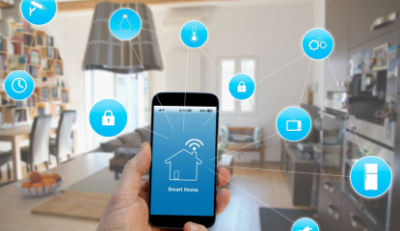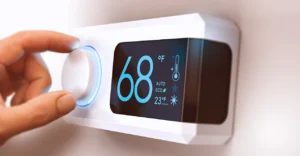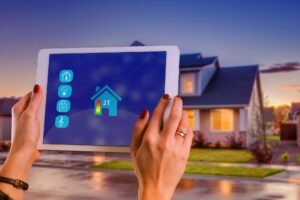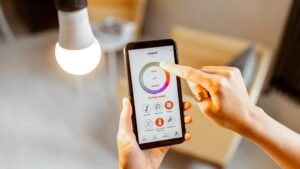A web of connected devices increasingly intertwines with our daily lives. From the moment we wake up to the time we go to sleep, smart technology assists, entertains, and monitors us. This network, often called the Internet of Things (IoT), has seamlessly integrated into our homes, workplaces, and even our bodies. Understanding the impact of these devices is key to navigating the modern world. This article explores the rise of connected devices, their benefits, the challenges they present, and what the future might hold.
The Era of Ubiquitous Connectivity
Today, the internet connects nearly everything in our era. This ubiquitous connectivity means that devices can communicate with each other and with us in real time. Smart speakers answer our questions, thermostats adjust the temperature before we arrive home, and refrigerators can let us know when we’re low on milk. This constant stream of data and interaction has fundamentally changed how we manage our daily routines, making our environments more responsive and intelligent. The proliferation of high-speed internet and affordable sensors has made this interconnected world a reality for millions.
A New Level of Convenience and Efficiency
The primary driver behind the adoption of connected devices is the unparalleled convenience and efficiency they offer. Smart home hubs, for instance, allow you to control lighting, security systems, and appliances with a simple voice command or a tap on your smartphone. This automation saves time and energy, freeing up mental space for more important tasks. In the workplace, connected devices streamline operations, from managing inventory with smart tags to optimizing energy consumption in large buildings. This efficiency translates into cost savings and increased productivity for both individuals and businesses.
Redefining Entertainment and Communication
Connected devices have completely redefined how we consume entertainment and communicate with one another. Smart TVs and streaming devices provide access to a virtually endless library of content on demand. Gaming consoles connect players from across the globe, creating vast online communities. Likewise, smartphones and smartwatches keep us perpetually linked to our social networks, friends, and family. These devices have made communication more immediate and accessible than ever, breaking down geographical barriers and fostering new forms of social interaction.
A Focus on Health and Wellness
The impact of connected devices on health and wellness is one of the most significant developments. Wearable fitness trackers monitor our physical activity, sleep patterns, and heart rate, providing us invaluable information regarding our overall health. These devices empower individuals to take a more proactive role in managing their well-being. In a clinical setting, connected medical devices allow for remote patient monitoring, giving healthcare providers real-time data that can lead to better diagnoses and more personalized treatment plans. This technology is not just about convenience; it’s about improving and, in some cases, saving lives.
Navigating the Challenges and Concerns
Despite the many benefits, the rise of connected devices also brings significant challenges. Privacy is a major concern, as these devices collect vast amounts of personal data. Ensuring this data is secure and used ethically is a critical issue that users, companies, and regulators must address. Constant connectivity can also result in issues such as digital fatigue and a blurring of the boundaries between work and personal life. As we rely more on this technology, we must also consider its risks and develop ways to reduce them.
The Future of Connected Living
The evolution of connected devices shows no signs of slowing down. Future trends point toward even greater integration and intelligence. We anticipate the emergence of smart cities, where a vast network of sensors manages traffic flow, public transportation, and utilities. Artificial intelligence will make devices more predictive and autonomous, allowing them to anticipate our needs before we even express them. As the technology becomes more sophisticated, its potential to transform our society will only grow, opening up new possibilities for how we live, work, and interact.
Embracing an Interconnected Future
Connected devices have moved from the realm of science fiction to become an integral part of modern living. They offer incredible benefits in convenience, efficiency, health, and communication, reshaping our daily lives in profound ways. While it is important to remain mindful of the challenges related to privacy and security, the trajectory is clear. Technology continues to enhance the human experience, creating an interconnected future. By embracing these innovations thoughtfully, we can harness their power to create a smarter, more efficient, and more connected world.
FAQs
1. What is the Internet of Things (IoT)?
The Internet of Things refers to the network of physical objects—or “things”—that are embedded with sensors, software, and other technologies for the purpose of connecting and exchanging data with other devices and systems over the internet.
2. Are my connected devices secure?
The security of connected devices varies. It’s important to use strong, unique passwords, enable two-factor authentication when available, and keep your device’s software updated. Reputable manufacturers regularly release security patches to protect against vulnerabilities.
3. How do connected devices impact my privacy?
Connected devices often collect data on your habits and preferences to improve their functionality. This raises privacy concerns about how that data is stored, used, and shared. It’s recommended to review the privacy policies of your devices and adjust the settings to limit data collection where possible.
4. What are some examples of connected devices in a smart home?
Common smart home devices include smart speakers (like Amazon Echo and Google Nest), smart thermostats, smart lighting, security cameras, smart locks, and smart appliances like refrigerators and washing machines.
5. Can connected devices save me money?
Yes, in many cases. For example, a smart thermostat can optimize your home’s heating and cooling to reduce energy consumption, leading to lower utility bills. Similarly, smart lighting can be programmed to turn off when rooms are unoccupied, saving electricity.




